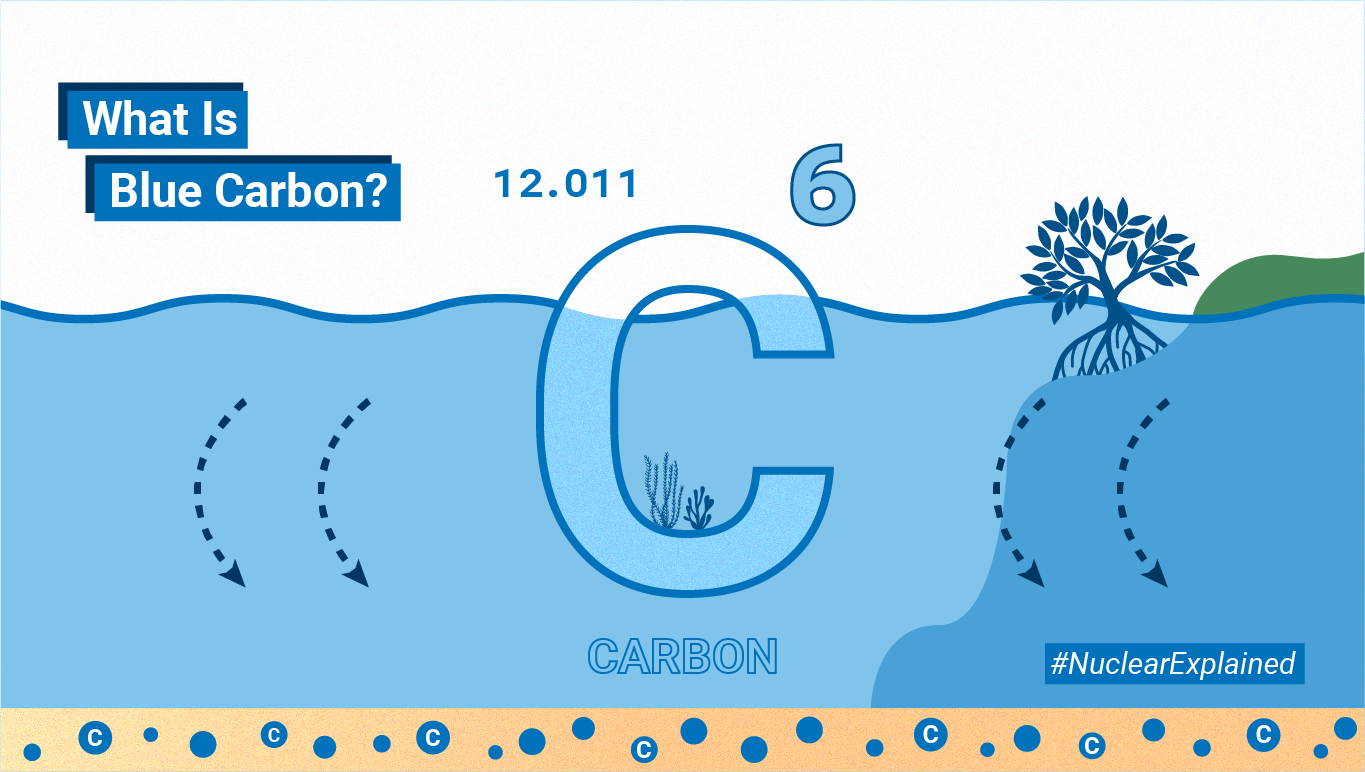Understanding Sediment Accumulation in Coastal Ecosystems
Seagrasses, mangroves, and marshes are not just picturesque elements of coastal environments; they play a critical role in the Earth’s ecological balance. One of their significant functions is their ability to accumulate sediments, which can be analyzed to understand environmental changes over time. This sediment accumulation can reveal information about changes that have occurred over the last few years or even millions of years ago.
The Role of Vegetated Coastal Ecosystems in Carbon Sequestration
Vegetated coastal ecosystems have a remarkable ability to sequester and store carbon within their sediments. This process is crucial as it helps mitigate the effects of climate change by removing carbon dioxide from the atmosphere and storing it in a stable form within the ocean floor. Scientists use advanced nuclear and isotopic techniques to measure this carbon sequestration capacity. These methods allow researchers to quantify how much carbon is being stored and understand the historical patterns of carbon accumulation.
Research at the IAEA Marine Environment Laboratories
The International Atomic Energy Agency (IAEA) Marine Environment Laboratories in Monaco are at the forefront of this research. They specialize in using nuclear and isotopic methods to determine how quickly organic carbon accumulates in marine sediments. To do this, scientists collect sediment core samples from vegetated coastal ecosystems. These samples are gathered using long plastic tubes that maintain the integrity of the sediment layers, allowing researchers to study the historical accumulation of sediments over time.
How Lead-210 and Caesium-137 Aid in Sedimentation Rate Analysis
One of the key techniques used by the IAEA involves the study of sedimentation rates using the naturally occurring radioactive isotope lead-210 (210Pb). This isotope, along with artificial radionuclides like caesium-137 (137Cs), provides insights into sedimentation rates over timescales of decades, extending up to around 100 years. This period is particularly significant as it coincides with the timeframe during which human activities have significantly affected the environment.
Understanding Radiochemical and Spectrometric Techniques
To analyze these sedimentation rates, scientists employ a combination of radiochemical separation and spectrometric measurements. These methods are tailored to each isotope involved in the analysis. Radiochemical separation involves isolating specific radioactive elements from the rest of the sample, while spectrometric techniques such as alpha and gamma spectrometry are used to measure the specific radioactivity of these elements.
Assessing Organic Carbon Stocks
In addition to understanding sedimentation rates, researchers also measure the organic carbon content and its isotopes within the sedimentary record. This is achieved through mass spectrometry methods, which provide detailed information about the organic carbon stocks and burial rates. By analyzing these factors, scientists can better understand how much carbon is stored in coastal ecosystems and how these levels have changed over time.
The Importance of This Research
The research conducted by the IAEA Marine Environment Laboratories is crucial for several reasons. Firstly, it provides valuable insights into the natural processes that regulate carbon storage in marine environments. Understanding these processes helps scientists predict how coastal ecosystems might respond to future environmental changes. Secondly, this knowledge can inform conservation efforts, guiding strategies to protect and restore these vital ecosystems.
Broader Implications and Considerations
In a broader context, the ability to accurately measure carbon sequestration in coastal ecosystems has significant implications for global climate policy. By quantifying the carbon storage potential of these environments, policymakers can better assess the effectiveness of various climate mitigation strategies. Additionally, this research highlights the importance of preserving and restoring vegetated coastal ecosystems, which are often threatened by human activities such as coastal development and pollution.
Conclusion
The study of sediment accumulation in seagrasses, mangroves, and marshes provides a window into the past, offering insights into how these ecosystems have evolved over time. Through the use of advanced nuclear and isotopic techniques, researchers are able to measure the carbon sequestration capacity of these environments, contributing to our understanding of global carbon cycles. As the world continues to grapple with the challenges of climate change, this research underscores the critical role of coastal ecosystems in mitigating its impacts. Protecting and enhancing these natural carbon sinks should be a priority for conservation efforts worldwide.
For more Information, Refer to this article.



































